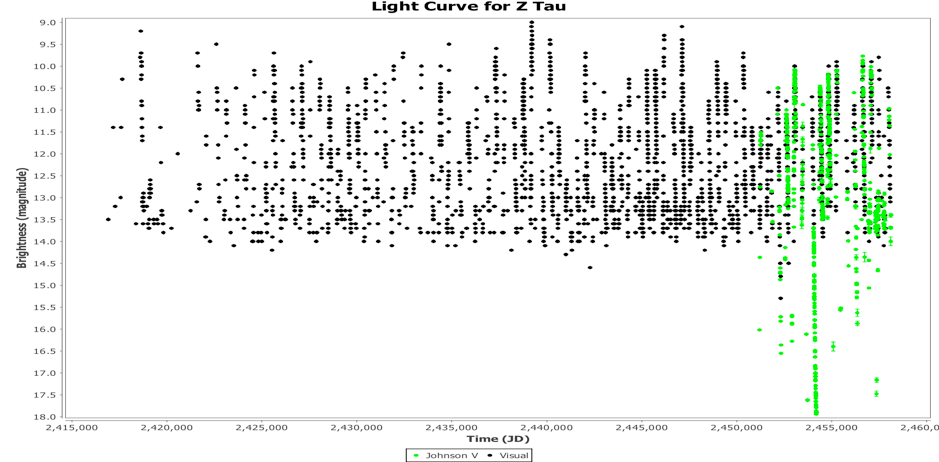LPV of the Month - May 2020 - R Cygni
R Cygni
By Rich Roberts
R Cygni
By Rich Roberts
SS Crucis—Reflections on a Forgotten Mira Variable
By Peter Williams
Y Per is a unique carbon star (C4,3e(R4e)) with a long history of AAVSO coverage. Y Per is located at RA 3:27:42.39 and DEC +44:10:36.5, so it can only be enjoyed by those of us in the Northern Hemisphere. Y Per is listed as a Mira star in VSX; however, this may no longer be the case. VSX also lists the magnitude range from 8.1 to 11.3; however, in the last 10 years the star has ranged between 8.5 and 10.5.
TX Psc is a very bright, nearby star which is well studied and of interest to professional astronomers. One observer from the BAA-VSS logged a few observations back in 1887 after which the star seemed to have been forgotten about until 1947 when regular visual observations picked up again. There are currently 13,515 observations in the AID, 91.6% of which are visual.
V Crb (15 49 31.31 +39 34 17.9, J2000) is a peculiar orange-red carbon-star (C6,2e (N2e)) with a long history of AAVSO coverage. Since V CrB recently became an asymptomatic giant branch star, it is currently in its hydrogen shell and helium shell burning stage of life. V CrB is in the legacy LPV program and Percy’s list of pulsating red giants (PRGs) exhibiting unusual behavior. The AID currently holds 34,114 observations by 1248 different observers since 1904.
SS Virginis
A Carbon Star
Summary
This month's Long Period Variable (LPV), SS Vir, should be a treat for visual observers. SS Vir is a bright but very dark red Carbon Star. It’s B-V index is 4.20, making it one of the reddest object around.
T Ursae Minoris (T UMi)
Revisited
Summary
T Ursae Minoris (T UMi) is an LPV that has shown a dramatic increase in its period and decrease in its brightness over the last 39 years, so much so that it is no longer considered a Mira type of LPV but is now classified as a Semi-regular (SR) LPV.
Z Tauri
Z Tau is an interesting Mira that has been observed by AAVSO observers and members since 1904. Nearly 6,000 observations are in the AID from over 400 different observers as can be seen in the light curve shown below which displays all observations in the AID. It is not one of the Legacy LPV Program stars, however there is a good reason why it deserves some special attention!
